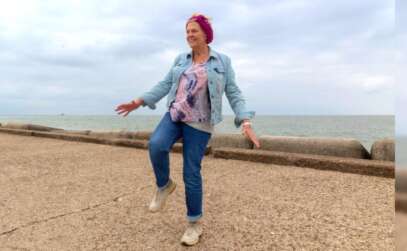Always worried about something: continuous anxiety in older adults
Do your aging parents or loved ones always seem to be worrying about something, often beyond what seems rational and realistic?
We can all get anxious at any age about issues and events in our lives. Anxiety is part of our natural response to stressful and potentially dangerous situations. However, as we age, anxieties about non-threatening situations can become more frequent, and a senior’s ability to deal with them be less effective.
For example, older adults may worry about financial issues around paying utility and other bills when they actually have more than sufficient funds to pay them. They may also develop a heightened fear of leaving their home in case “something happens” whilst they are out.
As an article for Aging Care describes:
“When anxiety worsens to the point that one’s fears, worries and even coping mechanisms negatively affect daily activities, relationships and overall quality of life, it crosses over into a … mental health condition.”
20% of older adults may be affected by anxiety
Anxiety disorders are far more common in older adults than many realise, with up to 20% of older adults affected. This means that anxiety disorders are more common in those aged 65 and over than depression or cognitive disorders.
The most common type is Generalized Anxiety Disorder (GAD). This defined as:
“Chronic, excessive worry for at least 6 months that causes distress or impairment.”
Signs of GAD in aging parents and loved ones
So, what are the signs of GAD that you should look out for in your aging parents or loved ones? As a general guide, anxiety disorders emerge when high and continuing levels of anxiety and worry affect the person’s quality of life.
Symptoms of anxiety in oder people can include:
– excessive & constant worrying
– “racing thoughts”
– inability to sleep or sleeping too much
– inability to concentrate
– unusual levels of tiredness
– irritability
– restlessness
– muscle aches
– feelings of being short of breath
– nausea or stomach issues
It’s easy to see how symptoms such as these may results in seniors seeking medical help from physicians for a range of physical conditions such as cardiac or gut conditions. In the process, a psychological underlying cause of anxiety may be missed and not addressed. As the British Medical Journal explains:
“(GAD) is in part a diagnosis of exclusion: physical health conditions, other mental health disorders, and medications or other substances should be ruled out as a primary cause.”
Late-life anxiety risk groups
Several factors can contribute to people developing anxiety in later life including being female, having chronic medical condition, being single, when grieving, and experiencing physical difficulties in everyday life. According to one study:
“The prevalence rate of anxiety disorders is higher in (the) elderly. … Women show at least twice as my anxiety disorders than men, independently of their age.”
Genetics may also play a role, as might brain chemistry.
GAD ‘triggers’
Environmental factors can act as triggers to excessive anxiety in older adults, including:
– loss of independence due to limited mobility, health problems or cognitive decline
– chronic health conditions and pain
– grief / bereavement through deaths of friends, family and partners
– loneliness and isolation
– financial insecurity and uncertainty
– sensory changes, such as hearing or sight loss
– cognitive conditions such as dementia or Alzheimer’s
Loneliness and GAD
There have been several studies into the association between loneliness and anxiety in seniors. The Irish Longitudinal Study on Ageing (TILDA), for example, concluded that:
“Objective and perceived social isolation independently affect the probability of suffering from MDD or GAD whereas loneliness is a risk factor for the deterioration of social life, which highlights the need to address the subjective factors (such as loneliness) and objective factors (such as social network size) of social isolation.”
GAD treatments
When a physician gives a diagnosis of GAD, they may recommend a blended approach that includes medication such as anti-depressants plus psychotherapy including cognitive behavioral therapy (CBT). If you are concerned about a loved one’s levels of anxiety, contacting their physician should be your first port of call for help.
How regular homecare can help
As an experienced home care company, we have seen how addressing some of the key concerns can help aging relatives and parents feel less anxious.
For example, regular visits by our home care team can help with regular home tasks from light housekeeping to laundry. Since our caregivers stay for at least two hours, there is also plenty of time to talk, do a crossword or engage in an activity, to reduce feelings of loneliness and help keep senior minds stimulated.
Daily help with personal care can enable seniors to continue to live in their own home, so that they can be independent for longer. For seniors in the early stages of dementia, regular visits by the same caregiver can be reassuring and reduce their stress levels. We can also provide live-in caregivers for those unable to live on their own, but who don’t want (or necessarily need) to go into residential care.
We also partner with established local companies to provide reliable tradespeople to help with:
- home maintenance and repairs
- adapting homes with mobility aids such as ramps and grab bars
- regular services such as snow clearance and gardening
Worried about aging parents? Call us
If you’d like to discuss home care options for a loved one, or for yourself, just contact us. We are happy to talk and glad to help with any aspect of home care. So you, your loved ones and the whole family can relax and worry less!




